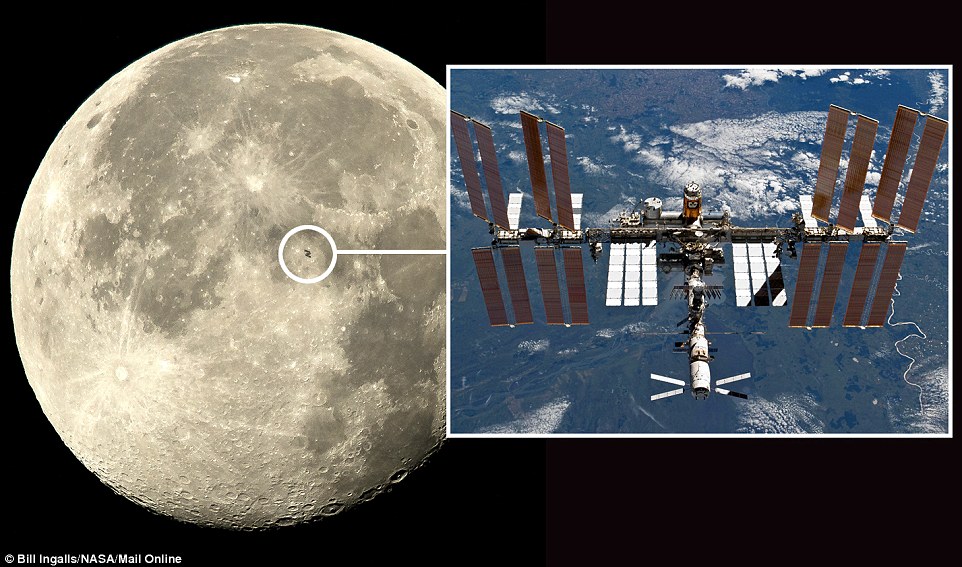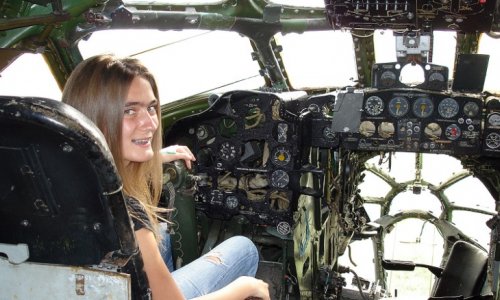It is the largest manmade object in orbit around our planet, yet the International Space Station was dwarfed by the moon as it was captured passing in front of the bright lunar surface.
Nasa released this stunningly detailed close up of the lunar surface as the space station transited in front of it at a speed of around five miles per second, or 18,000 miles per hour.
Usually the ISS can only be glimpsed as a bright shining streak in the sky, almost indistinguishable from the stars apart from its rapid movement.
However, backlit by the reflected light from the surface of the moon, the space station became far more visible on Sunday night, making it possible to make out its massive solar arrays.
The space station's passage in front of the moon, in itself a rare event, occurred just days after Friday's Blue Moon – a rare occurrence of a full moon twice in one calendar month.
So for the two events to coincide was seen as being a too rare to miss.
Nasa photographers Bill Ingalls and Joel Kowsky captured the fleeting moment from Woodford, Virginia, as it took the ISS just 0.82 of a second to pass in front of the pockmarked lunar terrain.
Together they then managed to take nine frames of the space station as it passed in front of the dusty plains of the moon's surface.
Mr Ingalls said it was the culmination of several attempts to capture the ISS as it passed in front of the moon since it first began being constructed in 1998.
Speaking to Spaceflight Insider, he said: 'This is not an extremely difficult photograph to make, the biggest part is time preparing, doing your homework, collecting the data on when and where the pass will be and then knowing your equipment's capabilities and limitations.
'Finally it's all about getting your location and hoping for good weather.
'This was not our first attempt, so learning from your mistakes and trying again is always important.'
The ISS is just 357 feet across, larger than a football pitch, while the moon is an enormous 2,159 miles in diameter.
Even so, the space station looks relatively large against the lunar backdrop in these pictures as it is significantly closer to the Earth.
The ISS orbits at just 258 miles above the Earth's surface while the moon is another 238,600 miles away.
At present there are six crew members on board the ISS after a Russian Soyuz spacecraft delivered Nasa astronaut Kjell Lingren, Kimiya Yui, from Japan, and Oleg Kononenko, a veteran Russian cosmonaut safely to the space station.
They joined Russian cosmonauts Gennady Padalka, Mikhail Kornienko and Nasa astronaut Scott Kelly on board the orbiting outpost.
The ISS orbits the Earth once every 90 minutes and has been visited by more than 200 people.
The crew spend around 35 hours each week conducing research experiments to help scientists better understand life in low gravity.
(dailymail.co.uk)





www.ann.az
Follow us !











